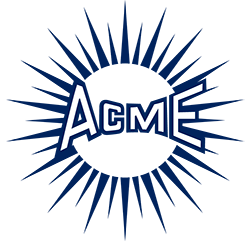This is a brief discussion of alkaline cleaning. There are three primary types: Soak cleaning, Spray cleaning and Electrolytic Cleaning. Selection of method is usually determined by the volume of work. High volume, spray cleaning is chosen because large quantities can be processed rapidly. Soak cleaning is appropriate for low volume. Electrolytic cleaning if subsequent electroplating may be required.
Soak Cleaning is slower and less efficient than spray and electrolytic methods. Generally it is employed only for moderate or small volumes of work.
Spray Cleaning combines the advantage of the detersive properties of the solution with the impinging action of sprays, which loosen the soil mechanically.
Electrolytic Cleaning gives the cleanest surfaces obtainable from conventional alkaline methods. The effectiveness of this method results from strong agitation of the bath by gas evolution and oxidation-reduction reactions during electrolysis. Another important factor is that similar electrical charges are imparted to certain soil particles and to the work, causing the soil to be repelled from the work surface.
Soils are removed by one or more of the following mechanisms.
- Saponification – animal or vegetable oils may be partially removed by this reaction, but saponification is slow and usually incomplete.
- Emulsification – the soil is broken up and suspended in the cleaner in the form of very fine liquid particles.
- Dispersion – the soil is dispersed, thereby lowering the concentration of soil at the surface of the work.
- Flocculation or Aggregation – once the soil has been removed and dispersed, it should reunite away from the work to precipitate out or be skimmed off. The ability of a cleaning solution to perform this function increases its life and results in cleaner work, because suspended soil is not redeposited on the work.
Requirements of Cleaners
The cleaning effectiveness of alkaline compounds is attributed mainly to the action “builders”, which are the principal bulk components of the formulation. Most builders are sodium compounds (carbonates, phosphates, silicates and hydroxides), which provide alkalinity and other desirable properties at low cost.
Cleaning compounds should:
- Reduce surface and interfacial tensions. A cleaner can get under the soil more easily. It will wet or displace the soil, thereby producing a cleaning action.
- Produce active and available alkalinity. Active alkalinity for high detergency. It is continually being lost through reactions such as saponification, neutralization and drag-out loss. This causes the available alkalinity to ionize, thus maintaining the level of active alkalinity
- Buffer a high alkaline solution. Buffers tend to preserve the original pH of the solution. The buffering action and available alkalinity provide long life to a cleaner at a constant pH.
- Soften hard water. Hard water used with cleaners must be treated to prevent the formation of insoluble calcium, magnesium and iron soaps, which build up hard to remove films on equipment and inactive builders of soaps intended for other functions.
- De-flocculate, disperse and emulsify removed soils. Must disperse soil once removed from the work; otherwise the solution will become highly contaminated and most likely re-soil the work when it is removed from the solution.
- Be readily rinsed from the work. Traces of cleaner that remain on the work after rinsing may cause skin irritation or production problems such as peeling or blistering of paints and electrodeposits.
- Contain builders that are compatible with other builders present and that are stable within themselves. Because of heat released from spontaneous reactions. Generally builders that are neither oxidizing nor reducing are compatible with each other.
- Should be non-corrosive to work being cleaned.
Composition of Cleaning Solutions
- Water is the most important component. It transmits heat and agitation evenly to the work, to reduce viscosity of the soil and carries the ingredients of the cleaner to the work, flushes the work and carries away the soil.
- Builders are the principle bulk components of the formulation which provide alkalinity and other desirable properties. Carbonates serve as buffers, as low cost sources of alkalinity and as water softeners. They are poor cleaners but they supply a fair amount of alkalinity. However the real value of carbonates is in helping to keep compounded cleaners free flowing. Phosphates serve as water softeners, they impart alkalinity, improve rinsing, some buffering action and are fair emulsifiers and detergents, a good dispersing and de-flocculating agent.
- Silicates make up the largest portion of most heavy duty alkaline cleaners, excellent emulsifiers and good buffers, hold soils in suspension and provide active alkalinity.
- Hydroxides are often the principal builder for supplying the necessary alkalinity. They increase electrical conductivity of the solution and improve saponification. However the detergent ability is very poor for the nonsaponifiable soils, and they have the poorest rinsing properties of all common builders.
- Surface-active wetting agents, soaps and synthetic detergents are added to cleaning compounds to lower surface and interfacial tensions, and so enhance cleaning action.
Solution Maintenance
Alkaline cleaners are weakened by reactions with acid, soils and hard water, by sludge resulting from common ion adsorption on solid soils or emulsified oils, and by dilution resulting from water additions made to replenish drag-out losses. Preferred practice in maintaining the strength of the solution is to make small additions of the compound at regular intervals, and to establish the operating strength of the cleaner as a range. Recommend to check concentration daily using a color indicator titration method.
